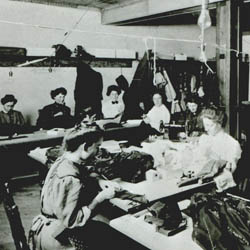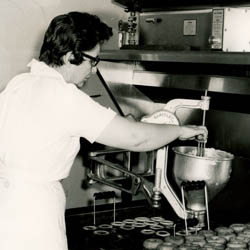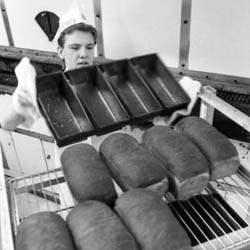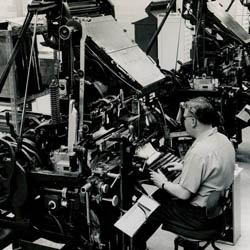Manufacturing has been defined as the use of machines, tools and labour, to make products for use or sale. In the late 19th century Saskatchewan, then part of the Northwest Territories, was opened to agricultural settlement under the terms of the National Policy of Sir John A. Macdonald's Conservative government. The policy did not envision or encourage industrial production in the Territories. Instead the policy and its cornerstone, the construction of the Canadian Pacific Railway, were intended to expand market opportunities for tariff-protected manufacturers in central Canada.
Notwithstanding the policy there have been dreamers who sought to develop a manufacturing base in Saskatchewan. Among the most ambitious was Chicago entrepreneur, Robert E. Glass, who in 1912 announced his intention to build Factoria, an industrial metropolis on 470 acres of land in the present Silverwood district of Saskatoon. Factoria was promoted as having abundant natural resources - water, limestone, sand and clay - to support a variety of manufacturing ventures. Despite some initial success in attracting a flour mill, two brick plants, a farm implement manufacturing plant and a hotel, the economic slowdown and lack of investment capital during World War I effectively killed the project.['1']
During most of the first half of the 20th century several factors limited the growth of manufacturing industries. Besides the national transportation policy, Saskatchewan suffered from its distance to high population density markets, shortages in some skilled labour, and perhaps an unfortunate expectation that the province's early glory days could return with just a revival in the fortunes of agriculture. Local entrepreneurs were however successful in a number of businesses connected to the province's resources including food, crop and beverage processing; wood and chemical manufacturing; and the production of farm implements and machinery. Many urban workers were employed in breweries, bakeries and printing plants. These were primarily small scale businesses catering to the local or regional market.
A brief and less well known chapter in Saskatchewan's manufacturing history was the establishment of a large car assembly plant in Regina in 1927 by General Motors. At its height of production the plant employed 850 and had a capacity output of 150 cars a day. This plant produced the first all-Canadian-made Chevrolet with a six-cylinder motor. The plant closed down in 1930 because of the market crash and the depression. In 1941 the Canadian government took over the plant, renaming it Regina Industries Ltd. Over 1,000 people worked there producing war munitions.
Since the 1990s there has been a remarkable growth in the size and diversity of manufacturing, attributed by some to greater market access provided by the North American Free Trade Agreement. Emerging areas of export oriented strength include aerospace and defense, transportation technology, automotive accessories, electronics and instrumentation. Food and beverage processing still accounts for more than twenty percent of the province's manufacturing industry with more than 250 active food processors.['2']
Manufacturing is widely dispersed across the province with nearly one third located outside the two principal cities. In most cases manufacturing wages and unionization rates are higher than the provincial average.
Footnotes
↑ ['1'] Silverwood Heights. Accessed April 16, 2010.
↑ ['2'] Food Processing and Manufacturing. Accessed April 16, 2010.






![Filling First Keg Beer, ['1932']](cropthumbs/A-1645.jpg)
![Munitions Plant, ['ca. 1940s']](cropthumbs/R-B9523.jpg)

![Brick Kiln in Estevan Brick Yard, ['ca. 1910s']](cropthumbs/R-A238.jpg)
![John East Ironworks, ['ca. 1940s']](cropthumbs/B-4242.jpg)


![Making Wooden Crates, ['ca. 1940s']](cropthumbs/R-B7046.jpg)
![General Motors Assembly Line, ['ca. 1928']](cropthumbs/R-A28572.jpg)